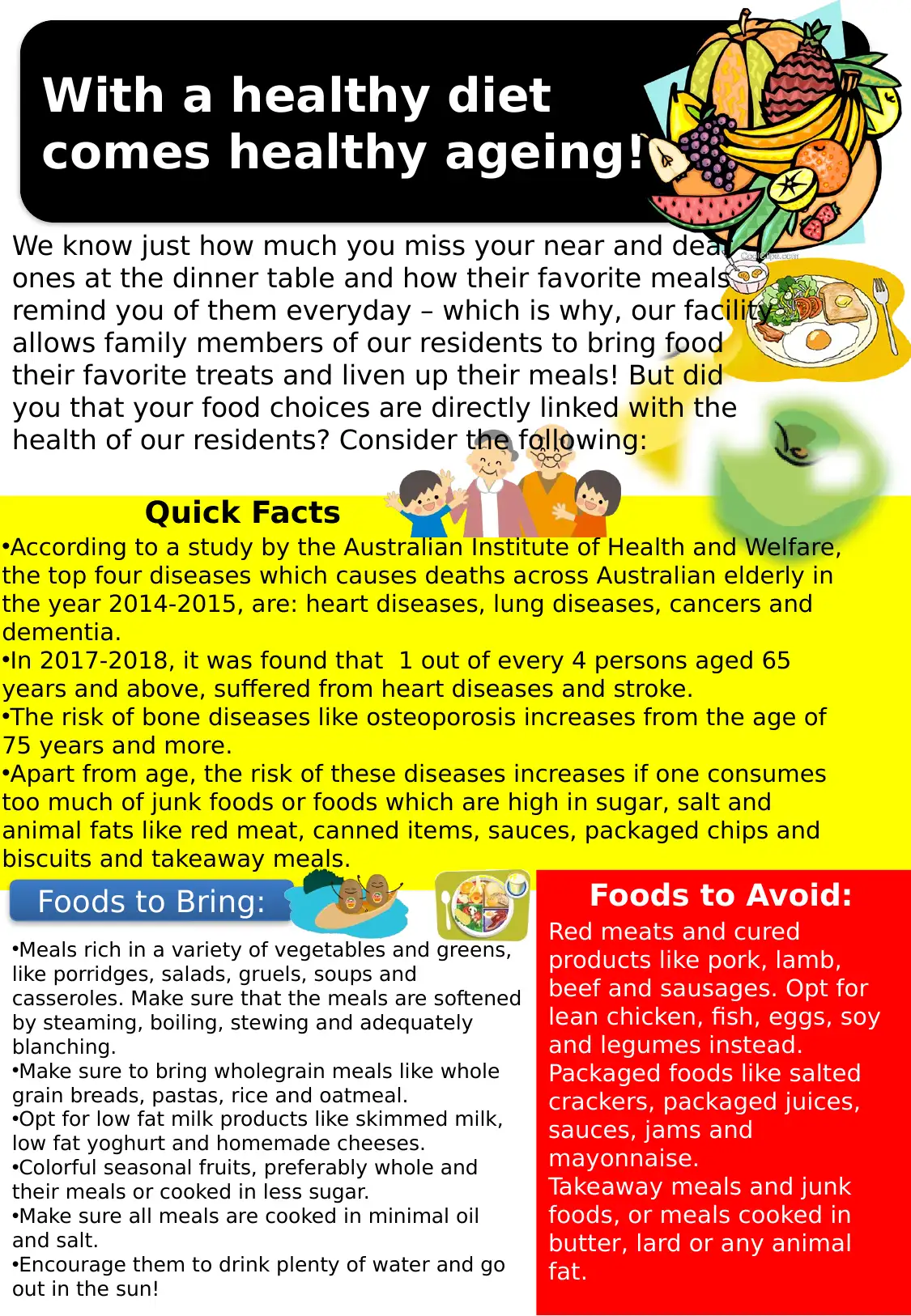Nutrition Case Study: Aged Care Facility Food Guidelines
VerifiedAdded on 2022/10/13
|1
|394
|11
Case Study
AI Summary
This assignment focuses on a case study centered on an aged care facility, where the student is tasked with ensuring the provision of appropriate and nutritious foods for older adults. The case study requires an assessment of dietary adequacy and the development of practical strategies to address nutritional concerns. The student must apply their knowledge of lifespan nutrition to this context. The provided solution examines the importance of healthy eating for seniors, highlighting the link between food choices and health outcomes, such as the prevention of heart diseases, lung diseases, cancers and dementia. It emphasizes the significance of consuming a variety of vegetables, wholegrain meals, and low-fat dairy products, while avoiding red meats, packaged foods, and junk foods. The assignment includes guidelines for the types of foods to bring into the facility, as well as foods to avoid, to promote the health of the residents. The ultimate goal is to improve dietary intake and overall well-being of the elderly residents. The solution also includes a fact sheet to educate people on the importance of a healthy diet.







![[object Object]](/_next/static/media/star-bottom.7253800d.svg)